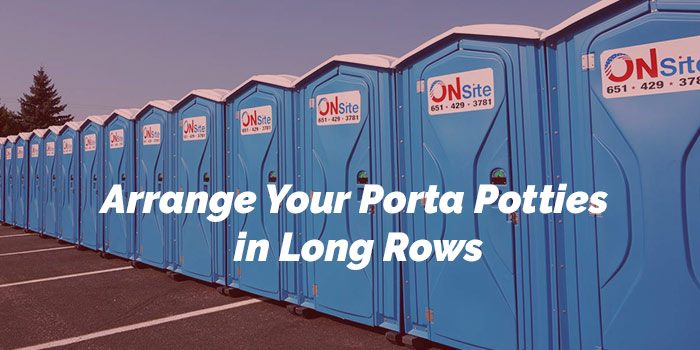2-Stall Satellite Spa Restroom
You may find yourself simply installing portable restrooms in any vacant area that doesn’t take up valuable space you need for keeping tools, supplies, or equipment.
 However, you should make sure you consider worker accessibility before you make any placement decisions. Closing the distance between the
bathroom
and where the action takes place significantly improves productivity by cutting down travel time. Osha states that you can consider restrooms nearby when they take less than ten minutes to get to. Try to use this ten-minute timeframe as a rule of thumb when planning, but the closer you get to the job site, the better.
However, you should make sure you consider worker accessibility before you make any placement decisions. Closing the distance between the
bathroom
and where the action takes place significantly improves productivity by cutting down travel time. Osha states that you can consider restrooms nearby when they take less than ten minutes to get to. Try to use this ten-minute timeframe as a rule of thumb when planning, but the closer you get to the job site, the better.
OSHA Porta Potty Rules & More For Construction Sites
October 9, 2013
do you have female employees on your construction job site? if so, there are osha (occupational health and safety act) restroom rules and regulations that must be followed to protect the health and wellbeing of women on your job site. In addition to this requirement, employers should go above and beyond what is required for an extra layer of comfort and protection for female employees. Osha regulations require that portable toilets be kept sanitary, and that an equal number of facilities be provided for both male and female workers.
 What is required vs. What is right for women on job sites.
What is required vs. What is right for women on job sites.
On construction sites, whether they are for new builds or for renovations, construction companies are obligated under osha laws to provide access to toilet and sanitation facilities. Most of the time, the requirement is met by working with a seattle porta potty provider who can assess your site’s needs and provide you with the necessary amount of restroom facilities. If you are asking the question, who is responsible for porta johns on a construction site in seattle , the answer is typically the person in charge of the construction site. Ready to experience exceptional service? reach out to green latrine on (206) 397-0336.
OSHA Portable Potty Rules And Regulations
A portable toilet on the job site is a way for the employees to have access to facilities where in many cases none exist. There are strict regulations in place however with the placement of portable toilets on the property. These regulations are implemented by occupational safety and health administration, osha, and help with safety and health concerns for outdoor workers. Osha has very specific guidelines that they have created when it comes to porta-potties. They are designed to give workers a healthy and sanitary place that they can use the facilities. Osha strictly enforces these laws and makes certain each job site has these clearly defined laws in place before the units are installed.
Osha regulations are always enforceable, especially in the wintertime. Osha requires contractors to provide one portable restroom for every 20 employees or less. Luckily, our basic porta potty includes a urinal and toilet. So one basic restroom per 20 employees is easily manageable. Other construction models and designs are also available for consistent efficiency.
Understanding your needs: assess the expected attendance and duration of your event to determine the appropriate quantity of portable toilets required. Check out our ‘porta potty insights’ for some simple rules of thumb to begin your estimating process. Event type and size: different events have varying restroom needs. Consider factors such as the type of event and the number of attendees to ensure you meet the specific requirements of your gathering. For instance, if food or beverage is served at your event, regulations require you to increase the amount of recommended porta potties by 20-30%. Location and accessibility: consider the event venue layout and accessibility to strategically place portable toilets for convenience.
Call us (888) 596-6032 when it comes to keeping a clean, safe, and sanitary environment, staying up-to-date with portable potty rules and regulations becomes a necessity. Whether you're overseeing a bustling construction site, managing a popular public event, or ensuring the hygiene of workers in agricultural settings, understanding the requirements set by organizations like osha, ada, gap, epa, and dot can make all the difference. In this article, we'll delve into the essential details of these guidelines and examine how they apply to different situations, so you can confidently ensure your portable sanitation facilities are properly equipped, waste is disposed of correctly, and vehicles are operated safely.
